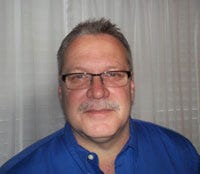Guest Blog: When to Leak Test
If your medical device is leak sensitive, the data you need to model is how testing various subassemblies and/or final assemblies will impact both costs and product quality.
December 7, 2011
When designing a device or an assembly line that involves testing, it’s important to know the various forks in the road that will affect the ultimate testing costs.
Testing takes time and money. If your medical device is leak sensitive, the data you need to model is how testing various subassemblies and/or final assemblies will impact both costs and product quality.
One example is the great number of medical devices or components made from molded plastic parts that also have internal chambers. For example, think of a device with one pathway for irrigation and another for aspiration. Too often, Uson’s medical device testing team has been approached to test such devices as a fully assembled single unit. But for the device to function properly, internal wall leakage is just as important.
The lowest cost testing solution in many such cases would involve first leak testing a subassembly. Yes, leak detection equipment can be configured to do both internal (common) wall and external leak tests. But the time you take to isolate test circuits, do physical crimping of tubes or connections, and so forth, during testing adds cost, lengthens test cycles, and may require more expensive leak detection equipment than would be required if testing of the subassembly were done first.
The good news is that a company like Uson has “been there, done that” for your type device—even if it is a totally new “mousetrap”. You don’t need to figure these type of decisions out on your own. All you need to know is to call testing experts who have grappled with your type leak detection challenges many times before.
 Putska (pictured on the left) is a medical device leak testing technical support manager for Uson, which first developed high accuracy leak testing methods for NASA, and since 1963 has specialized in leak detection, leak testing, and non-destructive testing for the medical device and medical packaging industries, among others. Putska works with medical device companies throughout North and Central America and has worked with Uson in various technical capacities since 1980.
Putska (pictured on the left) is a medical device leak testing technical support manager for Uson, which first developed high accuracy leak testing methods for NASA, and since 1963 has specialized in leak detection, leak testing, and non-destructive testing for the medical device and medical packaging industries, among others. Putska works with medical device companies throughout North and Central America and has worked with Uson in various technical capacities since 1980.
You May Also Like


.png?width=300&auto=webp&quality=80&disable=upscale)